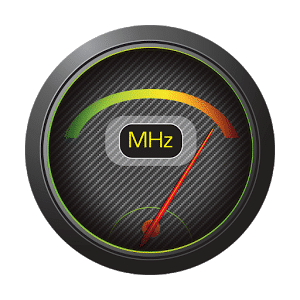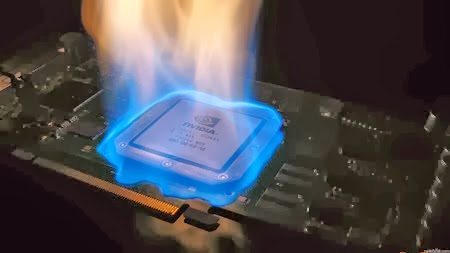Overclocking Guide: The Gigabyte R9 270
Why Overclock? What Are The Risks?

Why Overclock?
So you’ve made it past the first page which means you’re interested in finding out more about overclocking, but you are still unsure as to why you should do it. You’ll be pleased to know that this part is actually very simple. It’s all about performance. The only reason to overclock a graphics card is to increase its performance. That could be many aspects of performance such as: the average frame rate in games, the hashing rate in compute applications or the memory bandwidth. Irrespective of what you want your graphics card to perform better for, it is all achieve the same way: by increasing the clock speeds. There are many benefits from this but the main benefits are the cost. It costs absolutely nothing to overclock a graphics card safely to higher performance levels so in short it is not just because of performance, but because its free performance. By overclocking you can sometimes take your stock graphics card to an overclocked level of performance that beats the better graphics card above it in the product series it comes from. For example you can overclock an AMD R9 270 to perform better than a stock R9 270X, you can also overclock an Nvidia GTX 670 to a better level of performance than a stock GTX 680.
What are the risks?

So what are the risks involved in overclocking: free performance sounds too good to be true you might say. Well the answer to this isn’t straight forward. Graphics card overclocking done properly is so routine and easy to do that the managed risk of doing so is negligible if not totally non-existent. Graphics card overclocking done badly can risk damaging your hardware, although you’d have to stuff it up pretty badly to cause any significant damage to your system. The main risks to consider are as follows:
Increased Heat and Temperatures: overclocking a graphics card is likely to result in higher graphics card temperatures and in the graphics card producing more heat as it is using more electricity. This increased heat is both a direct and indirect risk. As a direct risk the increased temperatures can damage your graphics card if the cooling is not adequate. Particularly if overclocking results in very high temperatures that are sustained over a long period of time, this can lower the lifetime of the graphics card and increase its chances of failure. The indirect risk is that the extra heat your graphics card produces can heat up the rest of your system. Heat is bad for all your system’s components and if the extra heat raises the temperature inside your case then all your other components will have reduced lifetimes and increased risks of failure. Of course it is worth mentioning that most overclocking will not produce enough heat to make a noticeable difference. If overclocking increases your system temperature by a couple of degrees nothing is likely to degrade, but if you have a poorly ventilated case that is very compact then overclocking the graphics card can easily bump up temperatures by 5-10 degrees and over the long term this can make things more likely to fail, particularly hard drives. Remember extra heat is caused by extra power and that extra power also has to be fed into your system by your power supply. Your power supply will also produce more heat to provide more power so this is another example of indirect heat.
Power supply problems: One of the more common issues with overclocking graphics cards relates to the power supply. When you overclock your graphics card it uses more power: that’s guaranteed. That power has to be provided by the power supply, if the power supply is not capable of providing enough power for the overclock then you may encounter problems. The power supply may be incapable for a number of reasons but the main one is that it may not be able to supply the required amps needed on the +12 volt rail where graphics cards draw their power from. If your power supply is incapable of supplying the extra power needed the problems could be minor: your system may simply shut down under overclocked load. However, it could also be worse than that: cheap power supplies could break and causes power surges that damage your entire system, or worse, they could catch fire and start smoking. Power supplies breaking down are fairly common occurrences, especially as they get older, but for them to explode or catch fire is very rare. You should still note that the risk is there, but this risk only applies to low quality power supplies without adequate protection mechanisms.
System instability: when overclocking it is possible that it may make your system unstable if you have not found a stable overclock. This system instability is likely to come under heavy 2D and 3D graphics loads and you can normally tell if the system is unstable because you will be able to see artefacting, freezing or strange visual patterns on your screen (we will elaborate on these more on Page 5: Finding The Right Overclock And Testing Stability). However, in some cases you simply may not be able to tell and system instability can occur. The risks of this are fairly minimal and the instability is more than likely to result in a BSOD (Blue Screen of Death) in Windows, and whatever the equivalent is for other desktop operating systems. You may also encounter display freezing, where your display output crashes, this may or may not cause the whole system to freeze. More often than not you might as well assume the system has frozen because there’s no way to interact with it. The main risk with system instability is that you can lose data from improper system shutdown: if you’re working on a really important video file and your system crashes you may not be able to recover that data on system restart.
Graphics card failure: the most obvious risk is graphics card failure. This is strongly related to all other three risks we’ve pointed to but the basic rule is that overclocking a graphics card increases the risk of it failing which statistically means it has a reduced product lifetime. In most cases this risk is negligible, a heavy overclock might reduce the lifespan of your product from 15 years to 10 years. However, it is important to note that risks are there when overclocking: anything could fail in theory. The graphics card could overheat and get frazzled, die from a power surge or just generally sustain damage to onboard components from the additional heat, performance and power related stress.
We’ve explained all the main risks and on the face of it some of them sound pretty worrying…so how would you go about countering or reducing those risks? Well it is easier than you think. To address heat and temperature issues ensure your system has adequate cooling, also ensure the graphics card has adequate cooling. Generally speaking this means using faster fan speeds or more fans. Most modern systems control fan speeds automatically so you won’t even have to do anything. Adding extra fans is also fairly cheap and easy to do but from my experience this isn’t always necessary: most current-generation graphics cards come with adequate cooling solutions that can cope with the additional stress of overclocking. It doesn’t hurt to stick a couple of extra case fans in but only do it if you see a notable rise in temperatures for other system components like your hard drives, CPU and motherboard. Most graphics card overclocks will have a negligible impact on the rest of your system. To account for power supply problems you should use a power supply made by a good brand such as Be Quiet, Corsair, Cooler Master, Enermax, EVGA, FSP and Seasonic and ensure you select the wattage recommended by the graphics card manufacturer, this will be specified on the box, on the manufacturer website or on many review sites. For the graphics card we are using, the Gigabyte R9 270 OC, Gigabyte recommends a 500W power supply. To address system instability issues it is recommended that you run system stability tests after overclocking and before you carry on using your PC like normal. We will detail these procedures on page 5. To reduce the risk of graphics card failure you should follow all previous advice: most graphics card failures are caused by heat, temperature or power supply issues. The only instance where this might not be the case is with over-volting, that is when you increase the voltage of your graphics card. Over-volting can increase the risk of graphics card failure significantly if the voltage is raised too much. This is something only more experienced users should do and we will detail this more on page 5.








